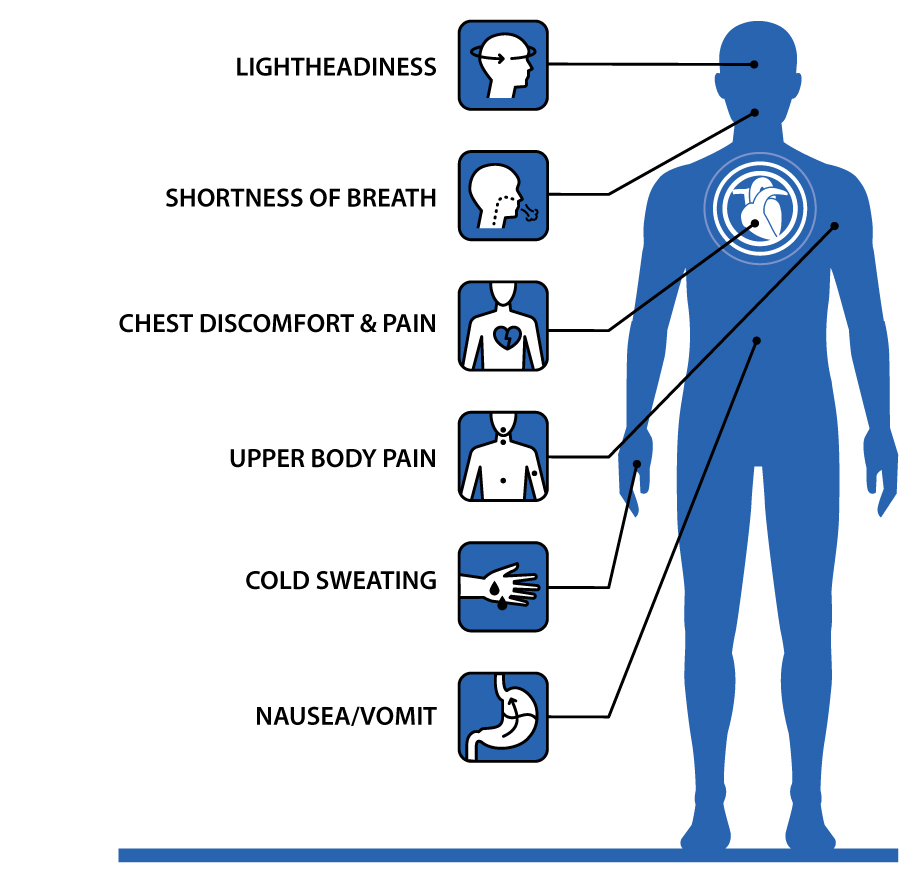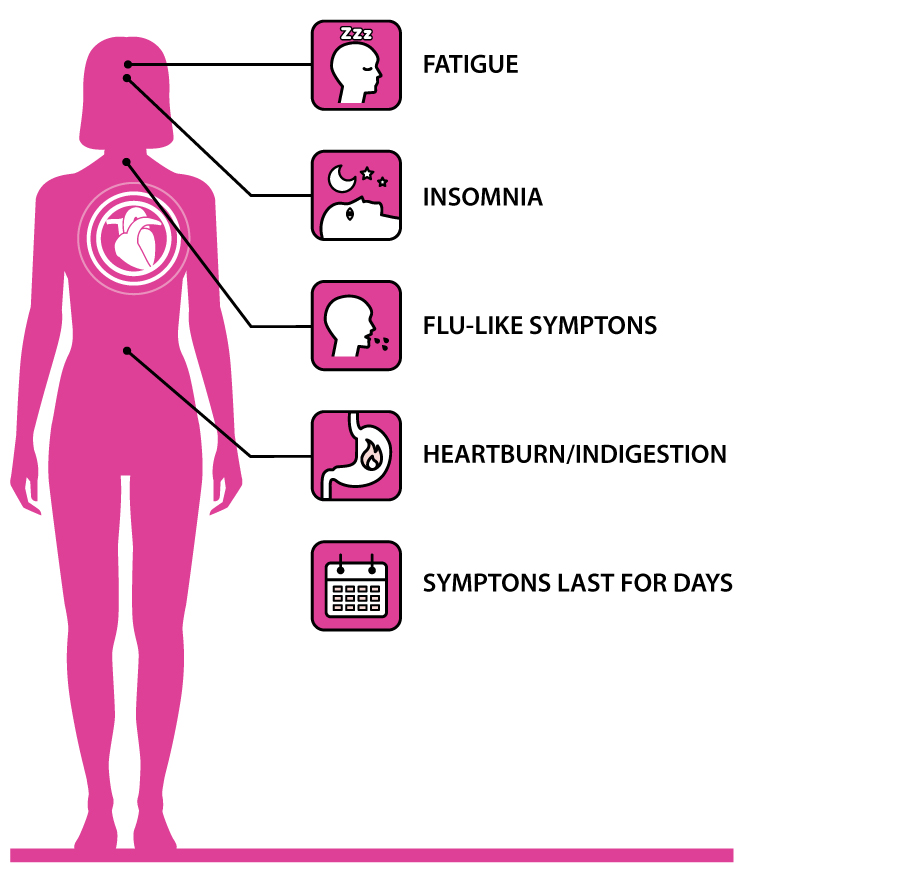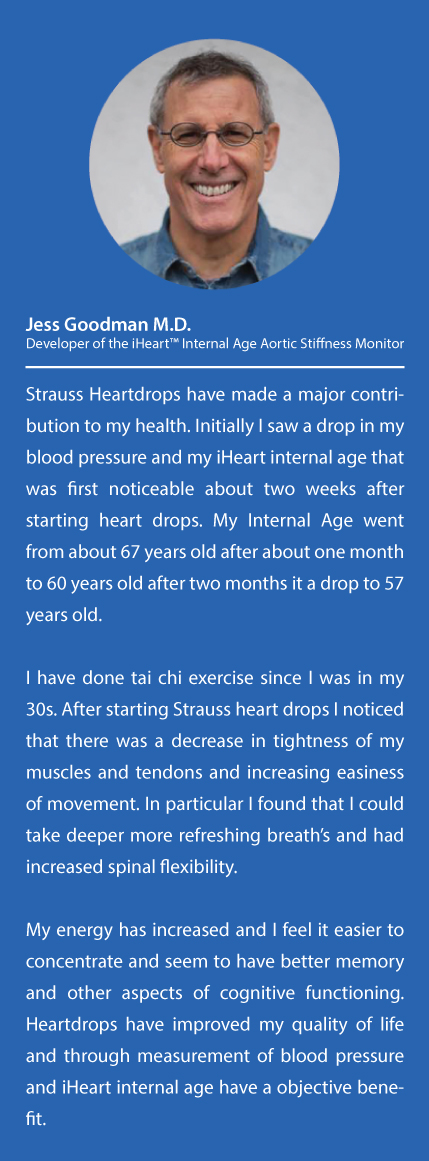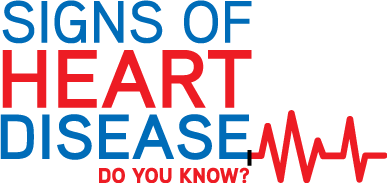Did you know Men and Woman have different signs of heart attacks!
Keep Him Alive
Heart disease is the leading cause of death for North America 1 in every 4 male deaths,(1) killing more men than all forms of cancer combined.
Heart disease is also the leading cause of death most racial/ethnic groups in North America.(2)
Half of the men who die suddenly of coronary heart disease have no previous symptoms.(3)
Men often report physical exertion prior to heart attacks

Keep Her Alive
Heart disease is the leading cause of death for North American women accounting for 1 in every 4 female deaths(1) killing more women than all forms of cancer combined.(4) Heart disease is also the leading cause of death among young women.
No longer a “man’s disease,” more women than men now die of heart disease each year. Only 54% of women recognize that heart disease is their number 1 killer.(2)
Almost 65% of women who die suddenly of coronary heart have no previous symptoms.(3) 90% of women have one or more risk factors for developing heart disease.
Women often report emotional stress prior to heart attacks

*Women might not experience the chest pain that is often noted as the most common sign of heart attack. If you have high blood sugar (diabetes) you may have no symptoms or very mild ones but your condition can be just as serious.
Related issues of heart and stroke
Chronic Stress
High Anxiety
PTSD
High Blood Pressure
High Cholesterol
High Blood Sugar
Cold Hands/Feet
Chest Pain or Pressure
Irregular Heartbeat
Persistent Cough
Male Impotence
Frank’s Sign
Unexplained Fatigue
Lightheaded or Dizziness
Weakening Grip Strength
Rapid or Irregular Pulse
Shortness of Breath
Gum Disease
US adults experience a Heart Attack each year
Average US Stroke Every 40 Seconds
Cardiovascular Disease Deaths US Annually
Average US CV Deaths Every 40 Seconds
- 90% of women have one or more risk factors for heart disease or stroke 90%
- 80% of heart disease & stroke events may be prevented by lifestyle changes and education 80%
- 65% of women who die suddenly of coronary heart have no previous symptoms 65%
- Only 54% of women recognize that heart disease is their number 1 killer 54%
General statistics
These statistics are used by health researchers, clinicians, healthcare policy makers, media professionals and consumers, serving as a major source for monitoring the cardiovascular health of the wider population. Here are some of the latest findings.
NO SYMPTOMS
Some people have silent CHD with no prior signs or symptons
Doctors, espicially Cardiologists maintain that “you are only as old as your areries”. They know that arterial aging wears out your brain, heart, kidneys and other organs as well as causing damage to hearing and eyesight.
ARTERIAL CLEANSE
1 out of 2 people need one.
IS IT YOU?

“75% of patients hospitalized for a heart attack have normal cholesterol levels” (American Heart Journal, January 2009).
If cholesterol tests are not accuratley predicting my risk of a heart attack then what tests should I consider?
Coronary Calcium Score (CAC) Scan:
Getting to the heart of the matter isn’t that difficult if you know what tests to get. The gold standard test is the coronary calcium scan. This is the test that insurance companies use to determine your health status and their risk status. Why do they use this test? Because there are no false positives – they can actually see if there is calcium build-up in your arteries. Something that cholesterol tests cannot do.
Myeloperoxidase (MPO) Blood Test:
What the outdated cholesterol test does do is provide a basis for recommending Statin drugs which could also be killing you!
Dr. Okuyama, of Nagoya City University reports: “We have collected a wealth of information on cholesterol and statins from many published papers and find overwhelming evidence that these drugs accelerate hardening of the arteries and can cause, or worsen, heart failure. I cannot find any evidence to support people taking statins and patients who are on them should stop”(5).
Dr. Peter Langsjoen, a heart specialist in Texas warns: “Statins are being used so aggressively and in such large numbers of people that the adverse effects are now becoming obvious. These drugs should never have been approved for use. The long-term effects are devastating.”
Dr. Langsjoen conducted research on 50 patients who discontinued taking statin drugs. Instead they supplemented with Coenzyme Q10 and the research team saw no adverse consequences(6).
A nationwide study conducted in 2009 by the University of California School of Medicine (USA) found that “75% of patients hospitalized for a heart attack have normal cholesterol levels”(American Heart Journal, January 2009).
Reference
(1)Kochanek KD, Xu JQ, Murphy SL, Miniño AM, Kung HC. Deaths: final data for 2009[PDF-2M)National vital statistics reports. 2011;60(3).(2)Mosca L, Mochari-Greenberger H, Dolor RJ, Newby LK, Robb KJ. Twelve-year follow-up of American women’s awareness of cardiovascular disease risk and barriers to heart health. Circulation: Cardiovascular Quality Outcomes. 2010;3:120-7. (3) Roger VL, Go AS, Lloyd-Jones DM, Benjamin EJ, Berry JD, Borden WB, et-al. Heart disease and stroke statistics —2012 update: a report from the American Heart Association. Circulation. 2012;125(1):e2–220. (4) Association, A. (2012). Heart Disease Statistics at a Glance – Go Red for Women. [online] Go Red For Women®. Available at: https://www.goredforwomen.org/about-heart-disease/facts_about_heart_ disease_in_women-sub category/statistics-at-a-glance/ [Accessed 1 Apr. 2015]. (5)Okuyama H, e. (2016). Statins stimulate atherosclerosis and heart failure: pharmacological mechanisms. – PubMed – NCBI. (6)Langsjoen PH, e. (2016). Treatment of statin adverse effects with supplemental Coenzyme Q10 and statin drug discontinuation. – PubMed – NCBI.
Copyright 2017 signsofheartdisease.com
FDA Required Disclaimer: The statements and or products shown on this website have not been evaluated by the US Food and Drug Administration. These products and or information are not intended to diagnose, treat, cure, or prevent any disease. Those seeking treatment for a specific disease should consult a qualified physician.
Signsofheartdisease.com is not a medical site and is not intended to offer medical advice. Signsofheartdisease.com urges you to consult your health care provider for proper diagnosis. You should consult your health care provider prior to taking any dietary supplement.

